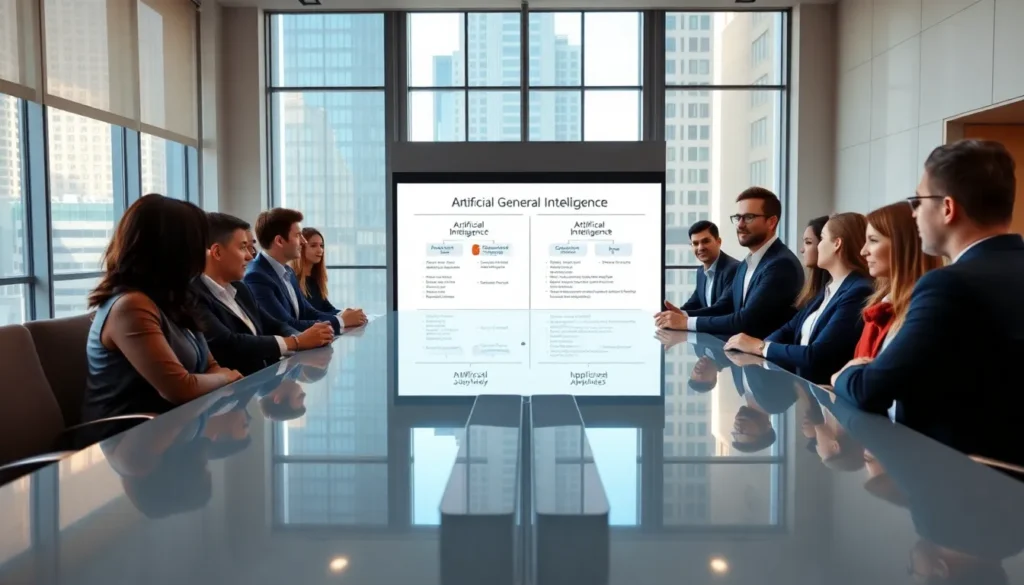Table of Contents
ToggleIn today’s digital landscape, data security is more crucial than ever. With cyber threats evolving rapidly, individuals and organizations must prioritize protecting sensitive information. Data security tools play a vital role in safeguarding data from breaches, ensuring compliance, and maintaining trust with clients and customers.
These tools range from encryption software to advanced threat detection systems, each designed to address specific vulnerabilities. As businesses increasingly rely on digital platforms, understanding and implementing the right data security solutions becomes essential. This article explores various data security tools that can help mitigate risks and enhance overall security posture, empowering organizations to navigate the complexities of the digital age confidently.
Overview of Data Security Tools
Data security tools play a vital role in protecting sensitive information from unauthorized access and cyber threats. These tools include various technologies and practices designed to ensure data privacy and integrity.
Encryption Software
Encryption software converts data into a secure format, making it unreadable to unauthorized users. Examples of popular encryption tools include VeraCrypt and BitLocker. These tools help secure data at rest and in transit, preventing data breaches.
Advanced Threat Detection Systems
Advanced threat detection systems utilize machine learning to identify and respond to potential threats. Solutions such as CrowdStrike and Darktrace analyze network behavior and detect anomalies, enhancing threat visibility and response times.
Firewalls
Firewalls act as barriers between trusted internal networks and untrusted external networks. Both hardware and software firewalls filter incoming and outgoing traffic based on predetermined security rules. Tools like Cisco ASA and pfSense provide robust protection against unauthorized access.
Data Loss Prevention (DLP)
Data Loss Prevention tools monitor and control data transfer, helping to prevent data leaks. Example DLP solutions include Symantec DLP and Digital Guardian. These tools enforce policies and ensure sensitive information is only accessed and shared by authorized personnel.
Security Information and Event Management (SIEM)
SIEM tools collect and analyze security data from various sources within an organization. Products like Splunk and IBM QRadar help detect and respond to security incidents in real-time. They provide comprehensive visibility, enhancing incident response efficiency.
Multi-Factor Authentication (MFA)
Multi-factor authentication adds an extra layer of security by requiring multiple forms of verification before granting access. Tools like Authy and Google Authenticator improve authentication processes, significantly reducing the risk of unauthorized access to sensitive information.
Backup and Recovery Solutions
Backup and recovery solutions ensure data remains accessible even after a cyber incident. Reliable tools like Acronis and Veeam facilitate regular data backups and enable rapid data recovery, minimizing downtime during incidents.
Employing a combination of these data security tools fortifies an organization’s defenses against evolving cyber threats, ensuring sensitive information remains protected.
Types of Data Security Tools

Data security tools play a crucial role in protecting sensitive information from various cyber threats. The following categories outline essential types of data security tools.
Encryption Tools
Encryption tools encrypt data, rendering it unreadable to unauthorized users. They secure data at rest and in transit using complex algorithms. Common encryption standards include Advanced Encryption Standard (AES) and RSA (Rivest-Shamir-Adleman). Tools like BitLocker and Veracrypt provide disk encryption, while solutions such as TLS (Transport Layer Security) protect data during transmission. Effective encryption tools help maintain client trust and ensure compliance with regulations like GDPR.
Access Control Tools
Access control tools manage user permissions, ensuring only authorized individuals access sensitive information. These tools utilize role-based access control (RBAC) and attribute-based access control (ABAC) to enforce security policies. Solutions such as Okta and Microsoft Azure Active Directory offer identity management and single sign-on capabilities. By implementing access control tools, organizations minimize the risk of data breaches and maintain accountability for access logs.
Data Loss Prevention Tools
Data Loss Prevention (DLP) tools monitor and protect sensitive information from unauthorized sharing or loss. DLP solutions analyze data both in use and in motion, allowing organizations to detect and respond to potential threats quickly. Tools like Symantec DLP and Digital Guardian provide functionalities such as content inspection and policy enforcement. By effectively deploying DLP tools, organizations can safeguard critical data and reduce the likelihood of compliance violations.
Features to Look for in Data Security Tools
Selecting the right data security tools involves understanding key features that enhance effectiveness and protect sensitive information. Focus on usability, scalability, and compliance to ensure robust security measures.
Usability
Usability is essential in data security tools. Tools should feature intuitive interfaces that simplify navigation and reduce training time. Clear documentation and customer support channels enhance user experience. Automated processes, such as alerting and reporting features, help users respond quickly to incidents. Additionally, customizable dashboards allow users to monitor key metrics efficiently.
Scalability
Scalability ensures that data security tools adapt to an organization’s needs as it grows. Tools should support increased data volumes and user counts without compromising performance. Features like cloud integration enable seamless expansion and flexibility. Furthermore, tools that offer modular designs allow organizations to add functionalities as necessary, accommodating future security demands.
Compliance
Compliance with industry regulations is a critical aspect of data security tools. Tools should assist organizations in adhering to standards like GDPR, HIPAA, and PCI-DSS. Comprehensive audit trails and reporting capabilities facilitate compliance monitoring and verification. Additionally, tools that incorporate built-in compliance checks ensure that security measures align with legal requirements, minimizing risk exposure.
Popular Data Security Tools
Numerous data security tools are available, each designed to address specific needs in safeguarding sensitive information. Below are three popular tools that play crucial roles in enhancing data protection.
Tool A
BitLocker
BitLocker provides full disk encryption for Windows operating systems, protecting data at rest. It encrypts entire hard drives, preventing unauthorized access even if the device is lost or stolen. BitLocker utilizes the AES encryption standard and offers features like recovery keys for data recovery and integration with Active Directory for key management.
Tool B
Symantec Data Loss Prevention (DLP)
Symantec DLP focuses on preventing unauthorized data sharing and ensuring compliance with regulations. It monitors data in use, in motion, and at rest, applying policies to identify sensitive information. With advanced content discovery and visibility, it enables organizations to manage data securely while minimizing risks associated with data breaches.
Tool C
Okta
Okta serves as an identity and access management platform facilitating secure access to applications. It employs multi-factor authentication (MFA) to enhance security during login processes. Okta’s role-based access control ensures that users access only the data necessary for their roles, thus reducing the likelihood of unauthorized access to sensitive information.
Data security tools are vital in the ongoing battle against cyber threats. By implementing a combination of encryption software, advanced threat detection systems, and access control measures, organizations can significantly enhance their data protection strategies. The right tools not only safeguard sensitive information but also ensure compliance with industry regulations and maintain client trust.
Selecting data security solutions that are user-friendly, scalable, and compliant is essential for effective risk management. As the digital landscape continues to evolve, staying informed about the latest tools and technologies will empower organizations to adapt and strengthen their defenses against potential breaches. Prioritizing data security is no longer optional; it’s a necessity for any organization committed to protecting its valuable information.







